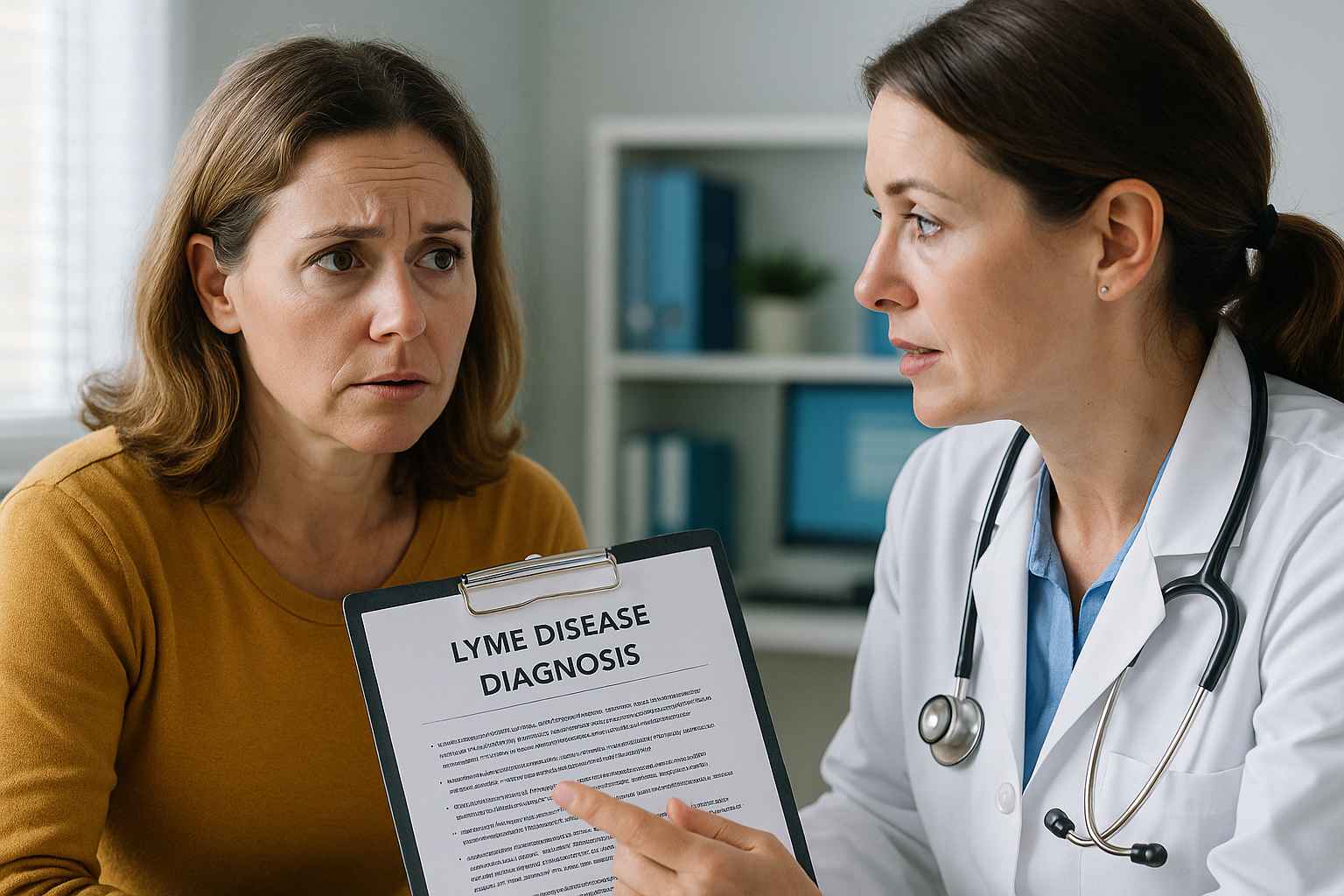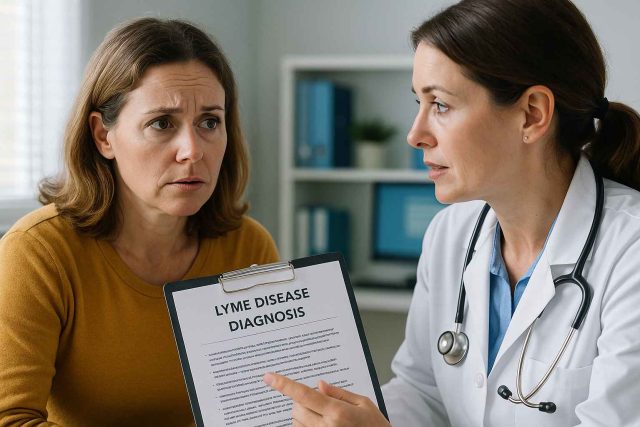
Getting a Lyme disease diagnosis can be unsettling. You may feel anxious, overwhelmed, or confused about what happens next. However, you’re not alone. Each year, over 470,000 Americans are diagnosed and treated for Lyme disease, and early action is one of the best ways to ensure a full recovery.
So, what should you do now? Whether you caught it early or the infection was only recently discovered, understanding your treatment plan and what to expect is crucial. With the right steps, most people recover fully—though it often requires patience, follow-up, and support.
This article provides clear, doctor-backed guidance on what to do after a Lyme disease diagnosis and how to manage your health moving forward.
Table of Contents
- Understanding Your Lyme Disease Diagnosis
- Starting Treatment: Antibiotics and Beyond
- Monitoring Symptoms and Managing Side Effects
- Supporting Recovery with Lifestyle and Mental Health
- Conclusion and FAQs
Understanding Your Lyme Disease Diagnosis
Lyme disease is a bacterial infection caused by Borrelia burgdorferi, typically spread through the bite of infected black-legged ticks. It’s most common in the Northeast, Upper Midwest, and Pacific Northwest but can occur in many wooded or grassy areas.
Most people with Lyme disease are diagnosed through a combination of symptom review and blood testing. Early symptoms often include a circular rash (erythema migrans), fatigue, joint pain, fever, and flu-like discomfort. However, not everyone experiences the classic bullseye rash, which can make diagnosis tricky.
Getting a Lyme disease diagnosis is just the beginning. While antibiotics are effective in most cases, the disease can affect different people in different ways. Timing is important—early treatment usually prevents long-term complications such as neurological symptoms or chronic joint inflammation.
It’s vital to keep a copy of your diagnosis and testing results, as these can help other healthcare providers understand your history. For helpful patient stories and updates, explore HealingWell’s top articles.
Starting Treatment: Antibiotics and Beyond
Once you receive a Lyme disease diagnosis, your doctor will likely prescribe antibiotics. Most early-stage Lyme cases are treated with a 10- to 21-day course of doxycycline, amoxicillin, or cefuroxime. Doxycycline is typically the first choice for adults and older children.
While antibiotics often resolve symptoms quickly, it’s crucial to complete the entire prescribed course—even if you start to feel better. Ending treatment early can lead to incomplete bacterial clearance and symptom relapse.
In more severe cases—such as when Lyme affects the nervous system or heart—IV antibiotics like ceftriaxone may be needed. Hospitalization might be necessary for short periods, especially if symptoms involve neurological changes like facial palsy or meningitis.
If your symptoms don’t fully resolve after treatment, your doctor may explore post-treatment Lyme disease syndrome (PTLDS). Although not considered active infection, PTLDS involves lingering fatigue, joint pain, and cognitive issues. Doctors recommend symptom-based management using rest, physical therapy, and sometimes medications like anti-inflammatories.
For accurate diagnosis and treatment guidance, always consult with a qualified medical provider. You can find a Lyme-literate practitioner through resources like Healthcare.pro.
Monitoring Symptoms and Managing Side Effects
Recovery from Lyme disease is rarely linear. Some people bounce back quickly, while others experience ups and downs for weeks or months. The key is ongoing monitoring and communication with your healthcare team.
Doctors often recommend follow-up visits within 2 to 4 weeks after finishing antibiotics to assess progress. If symptoms persist or worsen, additional testing may be required to rule out co-infections such as babesiosis or anaplasmosis, which ticks can also transmit.
Common post-treatment complaints include:
- Fatigue
- Brain fog or difficulty concentrating
- Joint aches
- Mood changes
These symptoms can feel frustrating, especially if others don’t understand the invisible nature of your condition. Therefore, it’s essential to track your symptoms with a daily journal or mobile app. Noting flare-ups, energy levels, and medication side effects can help you and your provider identify patterns.
In terms of side effects, antibiotics can cause nausea, diarrhea, or yeast infections. Taking probiotics and maintaining a healthy diet can reduce these risks. Drinking plenty of fluids and getting adequate sleep will also support your immune system.
If you have questions about antibiotic interactions or nutrition while on medication, a pharmacist or Lyme specialist can help tailor guidance to your case.
Supporting Recovery with Lifestyle and Mental Health
Lyme disease doesn’t just affect your body—it can impact your mood, relationships, and quality of life. That’s why whole-person care is a key part of recovery.
1. Nutrition and Hydration
A nutrient-rich diet supports healing. Anti-inflammatory foods such as leafy greens, berries, salmon, and turmeric may reduce joint pain and fatigue. Avoid excessive sugar and processed foods, which can exacerbate inflammation.
2. Movement and Rest
Light exercise like walking, yoga, or stretching can help with stiffness and mood. However, overexertion may trigger setbacks. Listen to your body and pace yourself with activities.
3. Emotional Well-being
Anxiety and depression are common during recovery. Chronic illness—even temporary—can be isolating. Talking to a counselor or joining a Lyme support group can offer emotional validation and practical tips. Many online communities share coping strategies and recovery stories that inspire hope.
4. Advocacy and Patience
Not everyone—including some healthcare professionals—fully understands Lyme’s variability. Educate yourself, advocate respectfully, and trust your instincts. Recovery may be gradual, but many patients regain full health over time.
If your symptoms persist longer than expected, ask your doctor about a multidisciplinary approach, which may include infectious disease specialists, neurologists, or rheumatologists.
For trusted health content on chronic illness and symptom management, check out more on Health.HealingWell.com.
Conclusion and FAQs
A Lyme disease diagnosis can feel like a major curveball, but it’s also a call to action. With prompt treatment, self-awareness, and support, you can heal—and often, emerge stronger.
The journey may require resilience and adaptation, but thousands of people recover every year. Staying informed and connected will help you navigate each step with confidence.
FAQs
How soon should I start treatment after a Lyme diagnosis?
Immediately. Early antibiotic treatment increases the chances of full recovery and reduces the risk of long-term complications.
What if I still have symptoms after treatment?
You may have post-treatment Lyme disease syndrome. Work with your doctor to manage symptoms and rule out other conditions.
Can Lyme disease return after treatment?
Reinfection is possible if you are bitten again, but relapse after complete antibiotic therapy is uncommon. Continue taking preventive measures outdoors.
Are there natural remedies that help?
Some patients find relief with supplements or herbal protocols, but these should only be used under the supervision of a knowledgeable healthcare provider.
Should I see a specialist?
Yes, especially if you have persistent symptoms. A Lyme-literate doctor or infectious disease expert can offer advanced evaluation and care.
Disclaimer
This content is not medical advice. For any health issues, always consult a healthcare professional. In an emergency, call 911 or your local emergency services.




